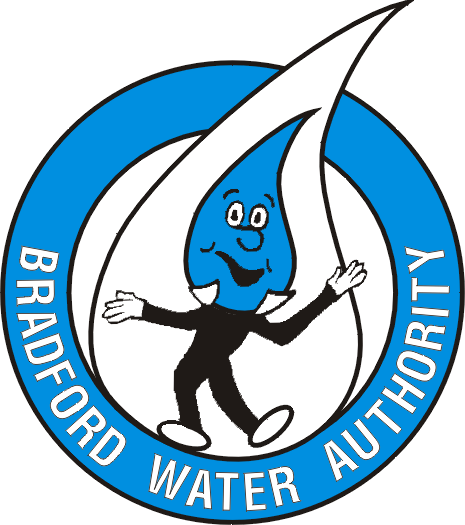Lead, Drinking Water & YOU!
Lead in
our environment is a public health issue about which we should all be
concerned.
Lead is a
soft metal which is now known to be harmful to human health if consumed or
inhaled. Since lead accumulates in the
body, its potential for harm depends upon the level of exposure from all
sources.
There are
three potential sources for lead to accumulate in the body. The major source is from food, and lead is
also inhaled from the air. The other
potential source of lead is from your drinking water.
To protect
the public’s health, public drinking water supplies are governed by the Safe
Drinking Water Act under which the United States Environmental Protection
Agency sets drinking water standards.
Although
there is a high level of compliance with drinking water standards throughout
the United States, there is still reason for some concern about certain
contaminants which may get into public drinking water supplies, including lead.
As your
supplier of drinking water we have prepared this information piece to help
educate you on this issue.
The United
States Environmental Protection Agency (EPA) sets drinking water standards and
has determined that lead is a health concern at certain levels of
exposure. There is currently a standard
of 0.015 parts per million (ppm).
Part of the purpose of this notice is to inform you of the potential adverse health effects of lead. This is being done even through your water may not be in violation of the current standard.
EPA and
others are concerned about lead in drinking water. Too much lead in the human body can cause serious damage to the
brain, kidneys, nervous system, and red blood cells. The greatest risk, even with short-term exposure, is to young
children and pregnant women.

If your home or water system has lead pipes, or

If your home has
copper pipes with lead solder, and

If the home was built
prior to 1986, or

If you have soft or
acidic water, or

If water sits stagnant
in the pipes for more than six hours.
Typically, if lead is present in the
drinking water, it enters after the water leaves the local water treatment
plant. The most common cause of lead
entering drinking water is corrosion, a reaction between the water and the lead
pipes or the lead-based solder.
When
water stands in the pipes of a residence for a minimum of six hours without
use, there is a potential for lead to leach, or dissolve, into the water if a
lead source is present.
Soft
water (water that makes soap suds easily) can be more corrosive and, therefore,
has higher levels of dissolved lead.
Some home water treatment devices may also make water more corrosive.
It
was common practice in the United States through the early 1900s to use lead
pipes for interior plumbing. Since the
1930s, copper pipe has been used for residential plumbing. Until 1986, however, lead-based solder was
used widely to join copper pipes.
Lead-free solder and lead-free materials are now required by federal law
for use in new household plumbing and for plumbing repairs. To find out if the plumbing in a residence
contains lead, try scratching the pipe with a key or screwdriver. Lead is a soft metal and is dull gray in
color. If lead pipes are present they
will scratch easily and will be shiny when scratched.
Dissolved
lead cannot be seen in water. Testing
by a state-approved laboratory is the only way to determine if drinking water
has high levels of dissolved lead.
Contact the local utility or health department for the name of an
approved laboratory. The lab will
provide the correct procedures to be followed for a water test. The U.S. EPA estimates that a test should
cost somewhere between $30 and $75.
If
the drinking water is determined to have high levels of dissolved lead, or if
there is an abiding suspicion of lead contamination because of the presence of
soft water, lead pipes, lead solder, and other lead-based plumbing materials,
there are ways to minimize exposure.
One
way is to “flush” each cold-water faucet in a home when water stands more than
a few hours. Flushing a cold-water
faucet means allowing the water to run until it gets as cold as it will get
before each use. Normally this may take
two or three minutes. Keep in mind that
toilet and shower use or doing laundry with cold water will also move through
the plumbing system, and this will reduce the amount of time needed to flush
the cold-water faucets to five to 30 seconds.
Another
way is one of avoidance: do not cook with or consume water from the hot-water
faucet. Hot water dissolves lead more
quickly than cold water. Especially
avoid using hot tap water for making baby formula. If hot water is needed for cooking or oral consumption, draw
water from the cold water tap and heat it on the stove or in the microwave.
If
plumbing repairs or other plumbing work is done, make certain that only
lead-free solder and other lead-free materials are used. This is now a federal law.
There are
other actions which can be taken by household users to reduce the risk of lead
in drinking water. For additional
information, please contact the local utility, county or state health
department, or the U.S. EPA. The U.S.
EPA has a toll free hotline dedicated to this subject ~ 1-800-426-4791 ~ and
has also prepared a booklet on this issue.
[This
information has been approved by the U.S. EPA and meets EPA’s lead public
notice requirements under Section 1417 of the Safe Drinking Water Act
Amendments of 1986]